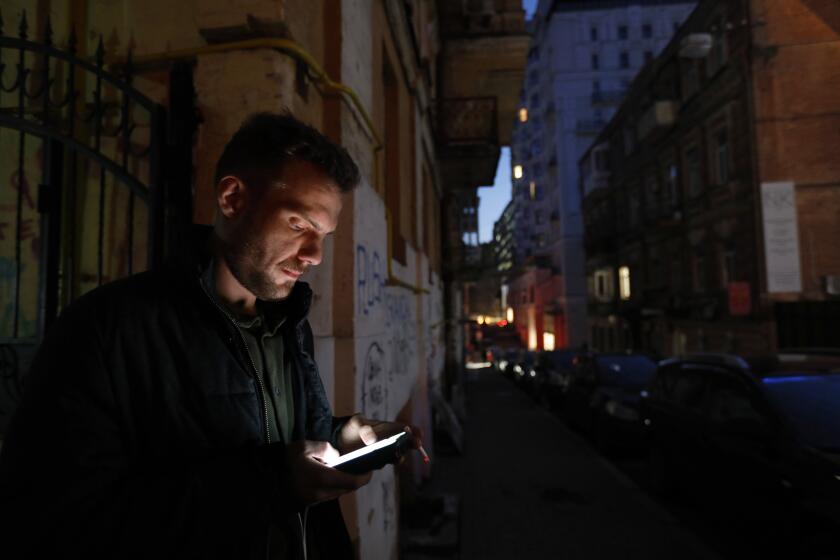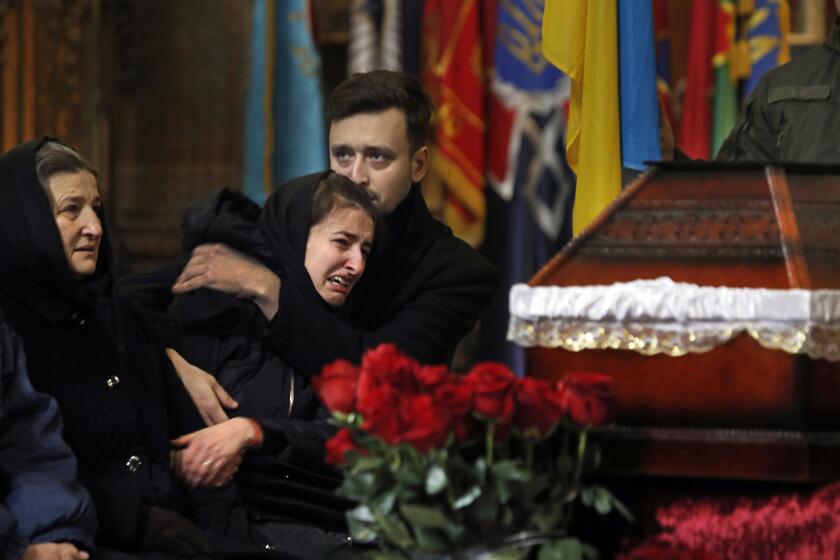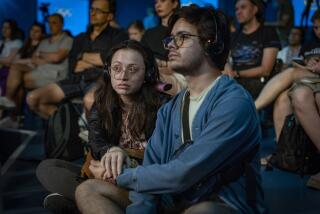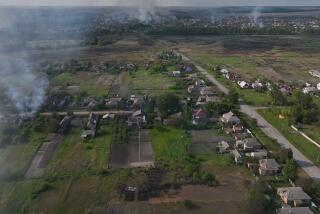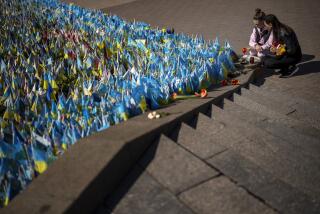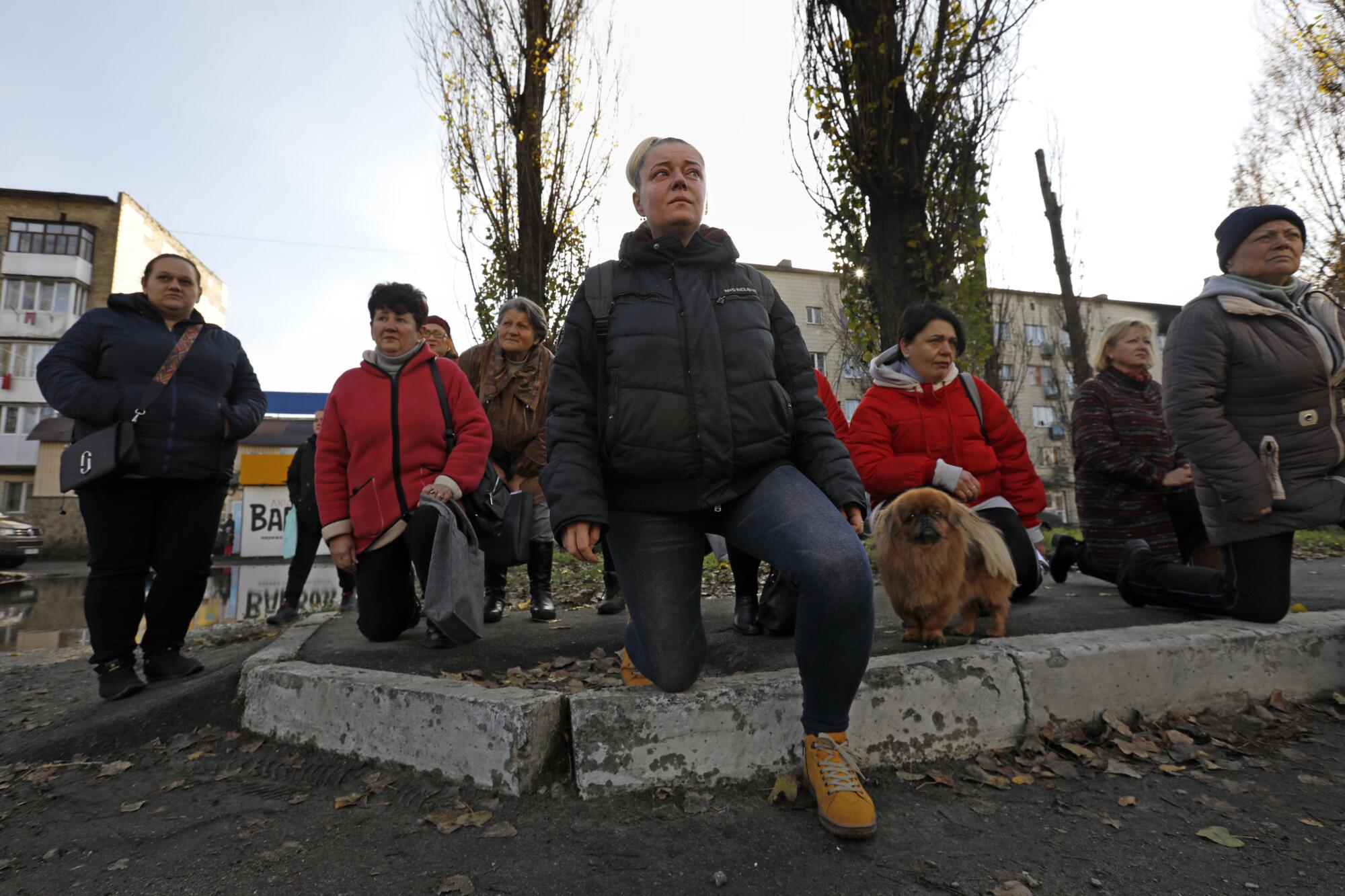
BORODYANKA, Ukraine — The smell of bodies decomposing under rubble no longer hangs in the air. The land mine-clearers have come and gone. School is back in session, though classes are curtailed by power cuts. The hair salon is open.
But Raisa Yakovenko, a 61-year-old pensioner, still jumps at the thump of a refrigerator door shutting — a faint echo of the Russian bombs that damaged her apartment and ravaged this community in the opening days of the nearly 9-month-old war in Ukraine.
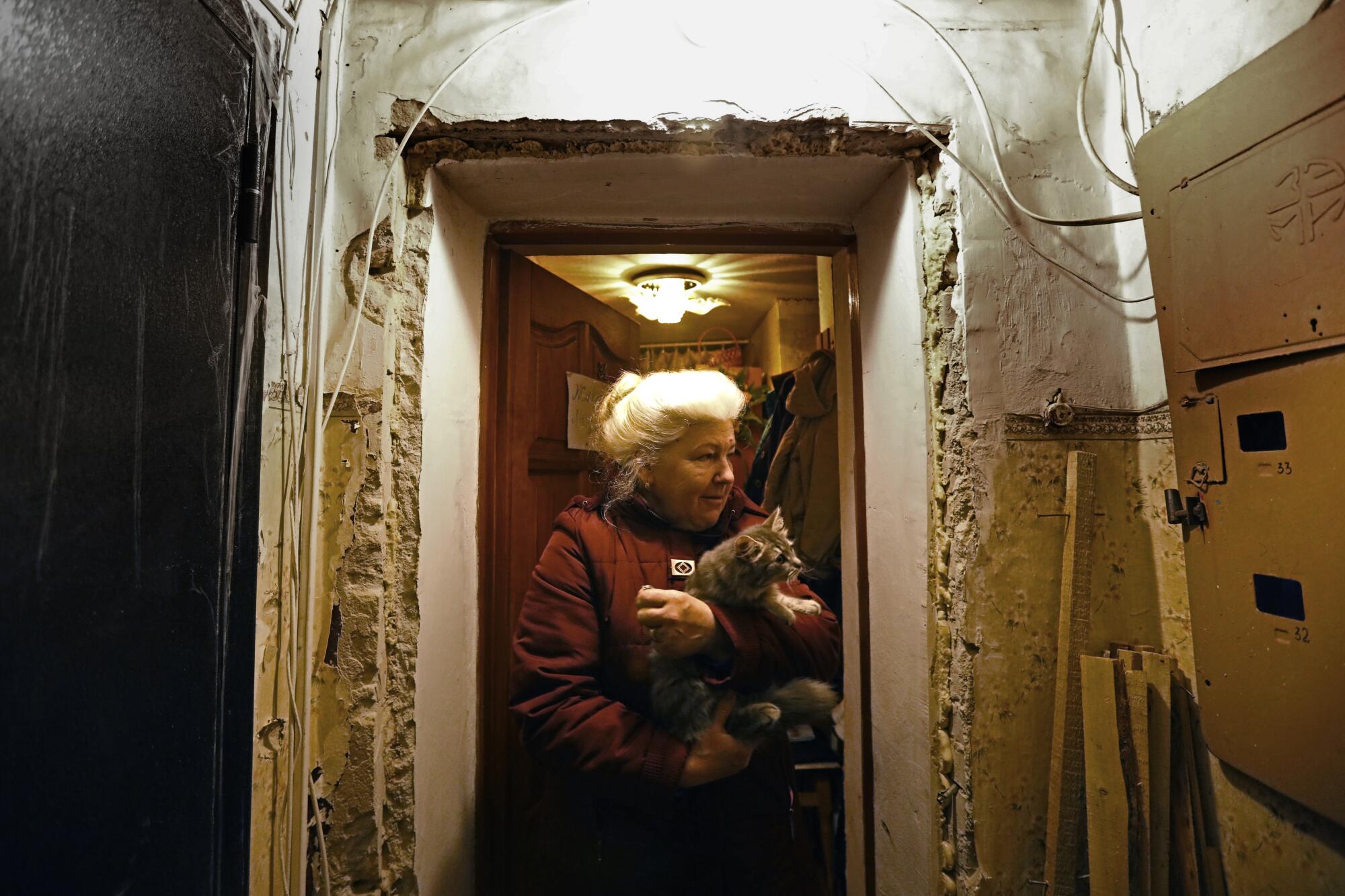
“My troubles are not so serious,” she said. “You can live without windows.”
The town of Borodyanka was among the invasion’s first casualties, becoming a choke point for Russian convoys rolling southeast toward the capital, Kyiv, about 35 miles away. Its 14,000 residents paid a heavy price for their resistance: Scorched, wrecked buildings sit alongside structures left untouched, as if a tornado tore through town.
“They didn’t expect us to fight back,” said Roman Rudnychenko, 57, who works for the town as its lead architect.
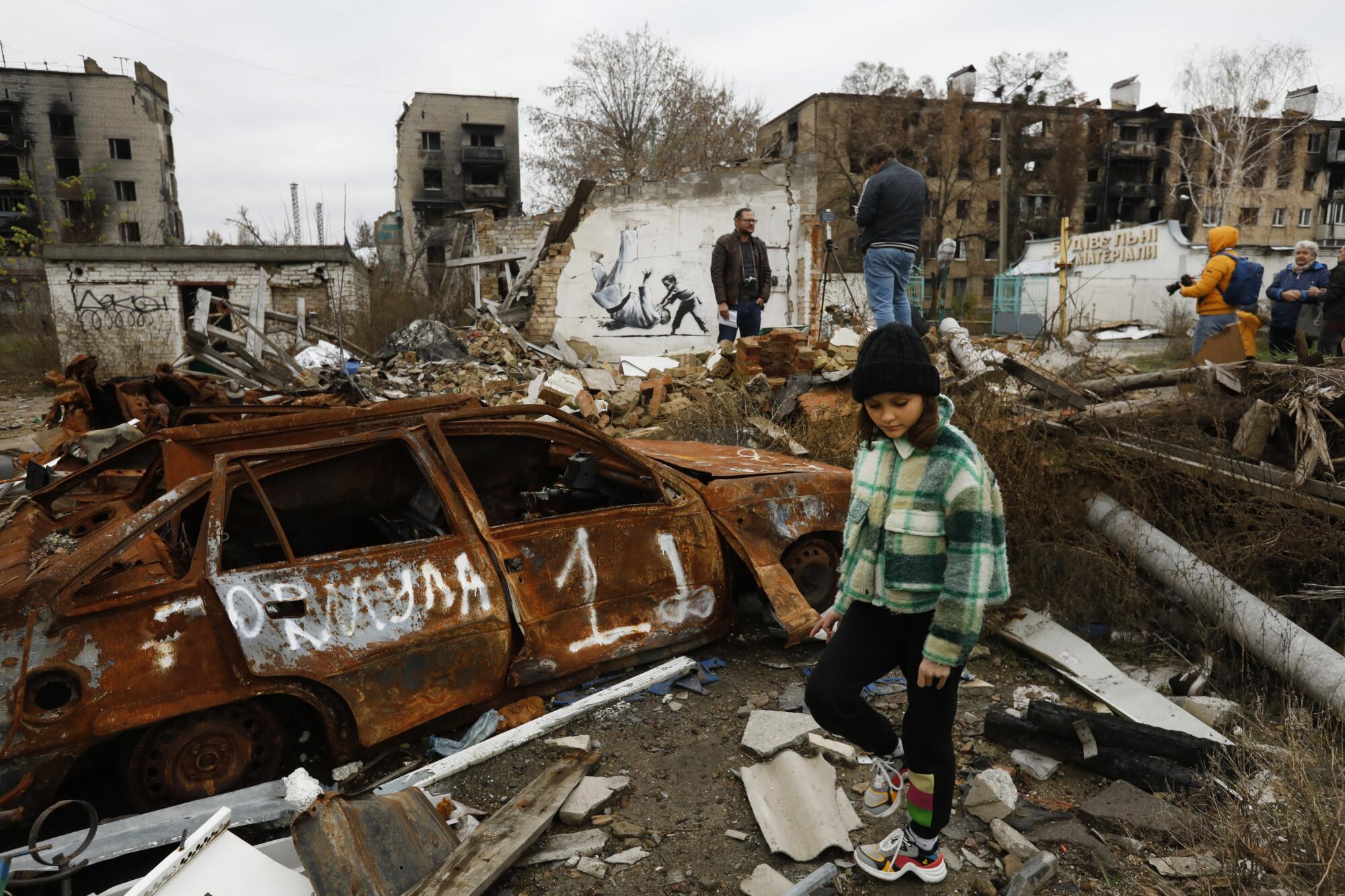
Rolling blackouts protect the bomb-damaged power grid in the Ukrainian capital. Residents shrug off the inconvenience.
Now, nearly seven months after Russian troops ended a brief but brutal occupation, Borodyanka has come to symbolize a certain defiant resiliency, though one that is sorely tested at times.
Visiting foreign dignitaries regularly trek up from Kyiv to gaze upon — and be photographed in front of — the blackened tower blocks. This week, the British street artist known as Banksy unveiled a signature stencil-style mural on the side of a heavily damaged apartment building, depicting a gymnast doing a handstand atop a pile of rubble.
“Borodyanka, Ukraine,” read the caption on the artist’s Instagram account.
Many locals, though, are somewhat weary of their plucky image. Only a little over half the town’s population has come back, and many of their homes are uninhabitable. With winter bearing down, townspeople and local authorities are racing to carry out repairs to make the cold months survivable.
In a sense, Borodyanka is Ukraine writ small. As more and more territory in the south and northeast is recaptured by Ukrainian forces, the receding tide of occupation leaves behind a landscape of battered cities, towns and villages.
The latest of those is the strategic southern city of Kherson, which Russian troops abandoned last week, smashing vital infrastructure as they went. President Volodymyr Zelensky, rapturously received by local people when he visited Kherson on Monday, hailed its residents as heroes and pledged to restore essential services as soon as possible.
But across the country, rebuilding is a fraught, quandary-filled endeavor.
With nationwide reconstruction costs already estimated at a staggering $350 billion, and nearly one-third of the country’s 44 million people displaced inside Ukraine or having fled abroad, Ukrainians grapple with constant, harsh reassessments: Stay or go? Rebuild, or start fresh elsewhere? Cling to memories, or put them aside?
“We’re part of a historic process,” said Rudnychenko, the architect. “But we don’t know yet how the story ends.”
::
A street with the simple name of Tsentralna — Central — cuts a straight line through Borodyanka, bisecting neighborhoods of modest wood or brick homes that give way to forests and fields. It’s lined with large apartment buildings, many dating back to the Soviet era, punctuated by small businesses, the post office and the police station.
Even in its prewar heyday, the street might have appeared unprepossessing to outsiders. But for Olga Drabei, 34, who lived her entire life at Tsentralna 306, her third-floor flat represents “everything — my entire childhood, marriage, motherhood, all that is dear to me.”
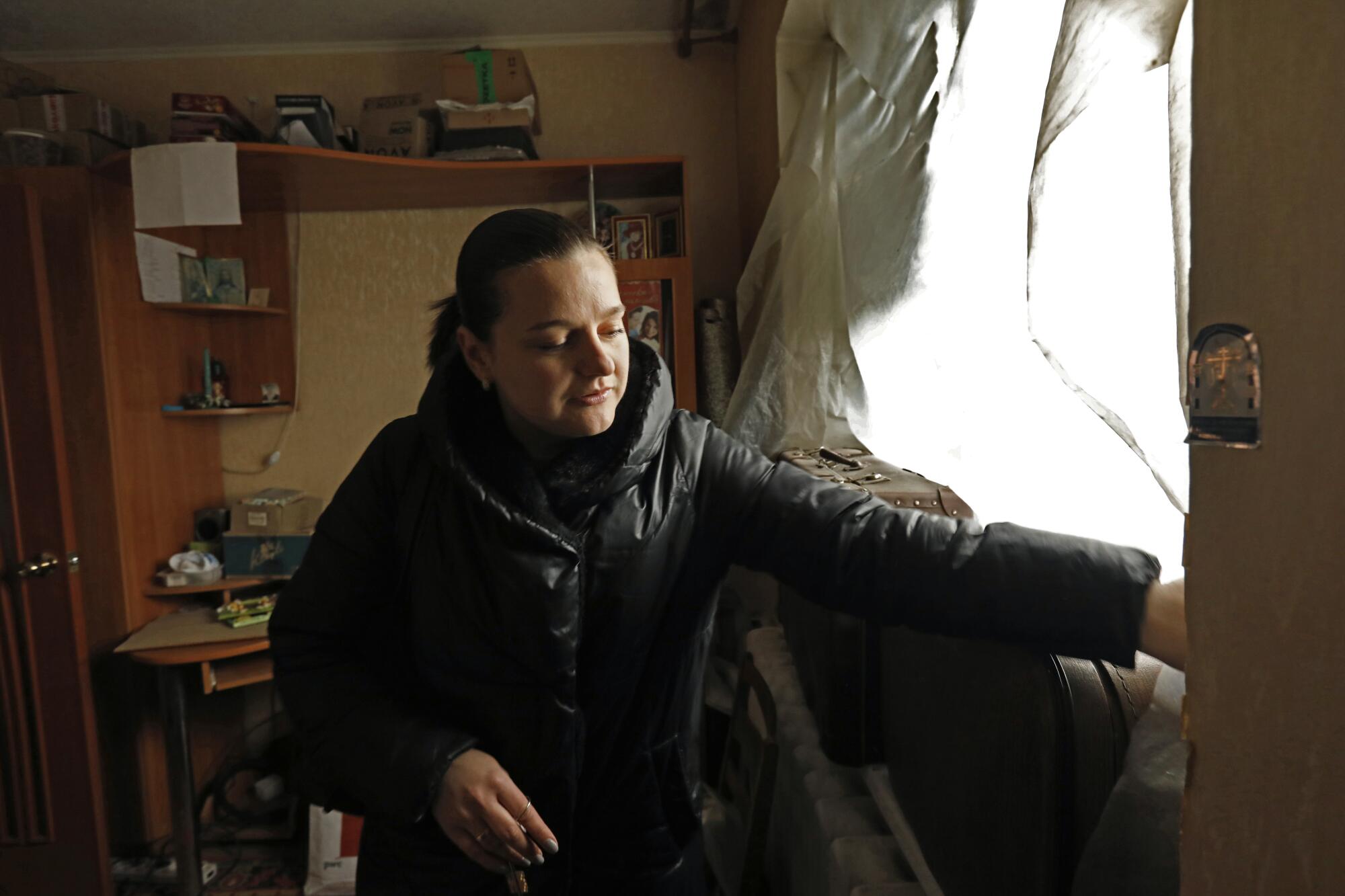
More than eight months after bombing shook the building in early March, the 50-unit block has been deemed structurally sound, but is still without electricity or running water. Blasts blew out dozens of windows; fire left stairwells charred. Some residents gave up hopes of returning before winter, sealing up doorways with giant squiggles of foam insulation.
Drabei and her husband, together with their 7-year-old son, hope to move back in soon from cramped temporary quarters nearby. But her parents and 89-year-old grandmother, who lived with them before the war, may not rejoin them. War’s upheaval has already been too much.
On a dank day last week, Drabei showed visitors around the apartment’s chilly, jumbled rooms. The television and most appliances had been looted. Her son had already outgrown a small child’s bed left behind in a corner. The once carefully tended garden behind the building was a tangle of weeds and bare tree branches.
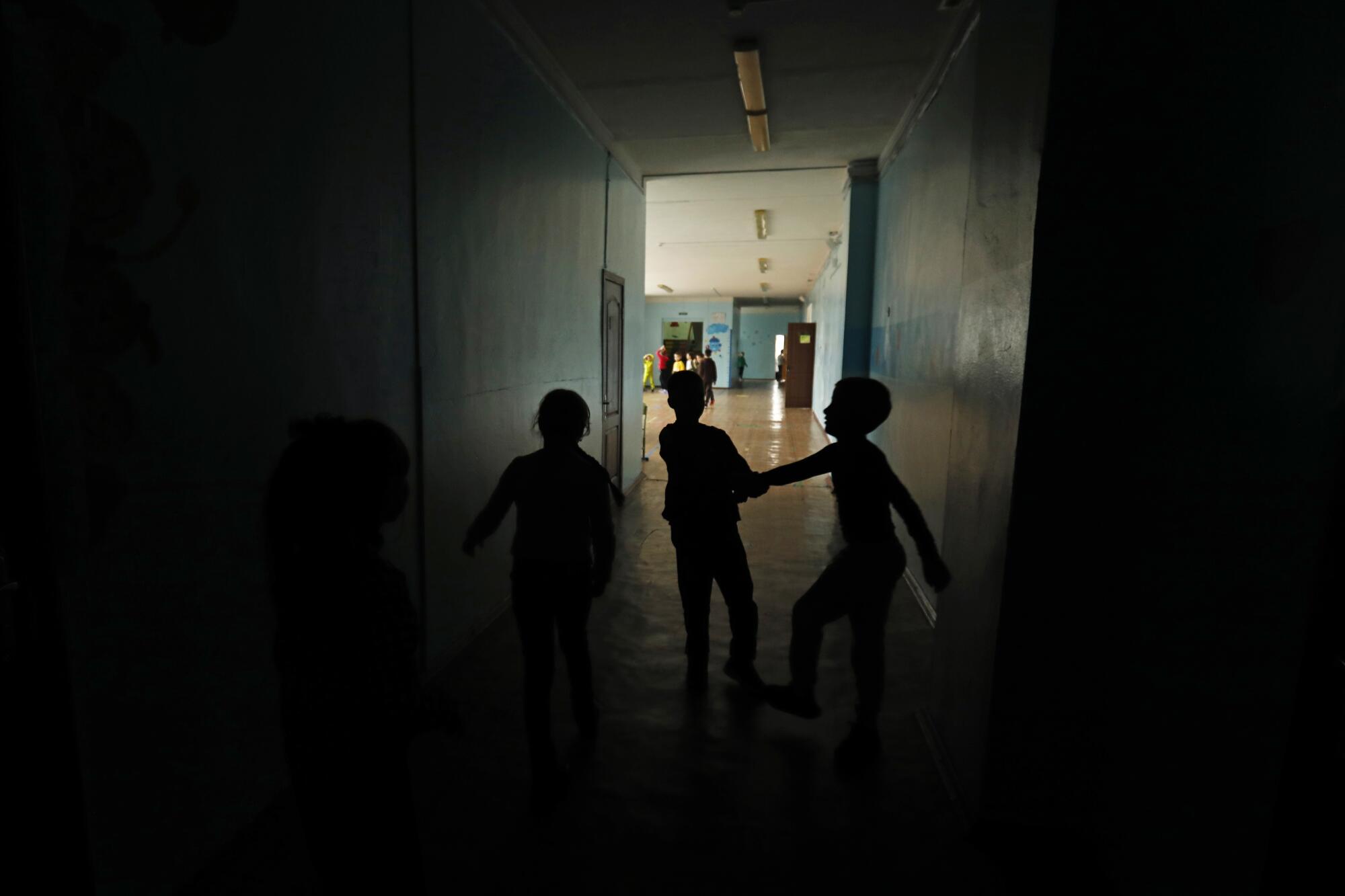
“We’re lucky — we’re alive, and we have a place to return to,” Drabei said. “Life will come back to our town. It will just be different than before.”
Just down the street, at Tsentralna 367, Yakovenko, the pensioner, lives alone with her kitten, Javelinka — named after the antitank missiles that helped Ukrainian forces blunt the Russian offensive aimed at Kyiv. The damage to her building happened when missiles slammed into a military recruitment office across the street in early March, nearly flattening it, along with the adjoining greengrocer’s and pharmacy.
Unexpected noises still make her nervous, she said, but stroking Javelinka helps her calm down.
The Times’ Carolyn Cole is on the ground in Ukraine as residents prepare for winter’s cold amid Russian missile strikes against the nation’s infrastructure.
With her window blown out, Yakovenko made do with plastic and cardboard coverings all spring and summer, until the state paid to install new glass. She was still waiting for a door to replace the one that was blasted off its hinges.
She counted herself lucky. Along with virtually everyone on Tsentralna, she knew the story of Ivan Simoroz, a young police officer who once lived on the street.
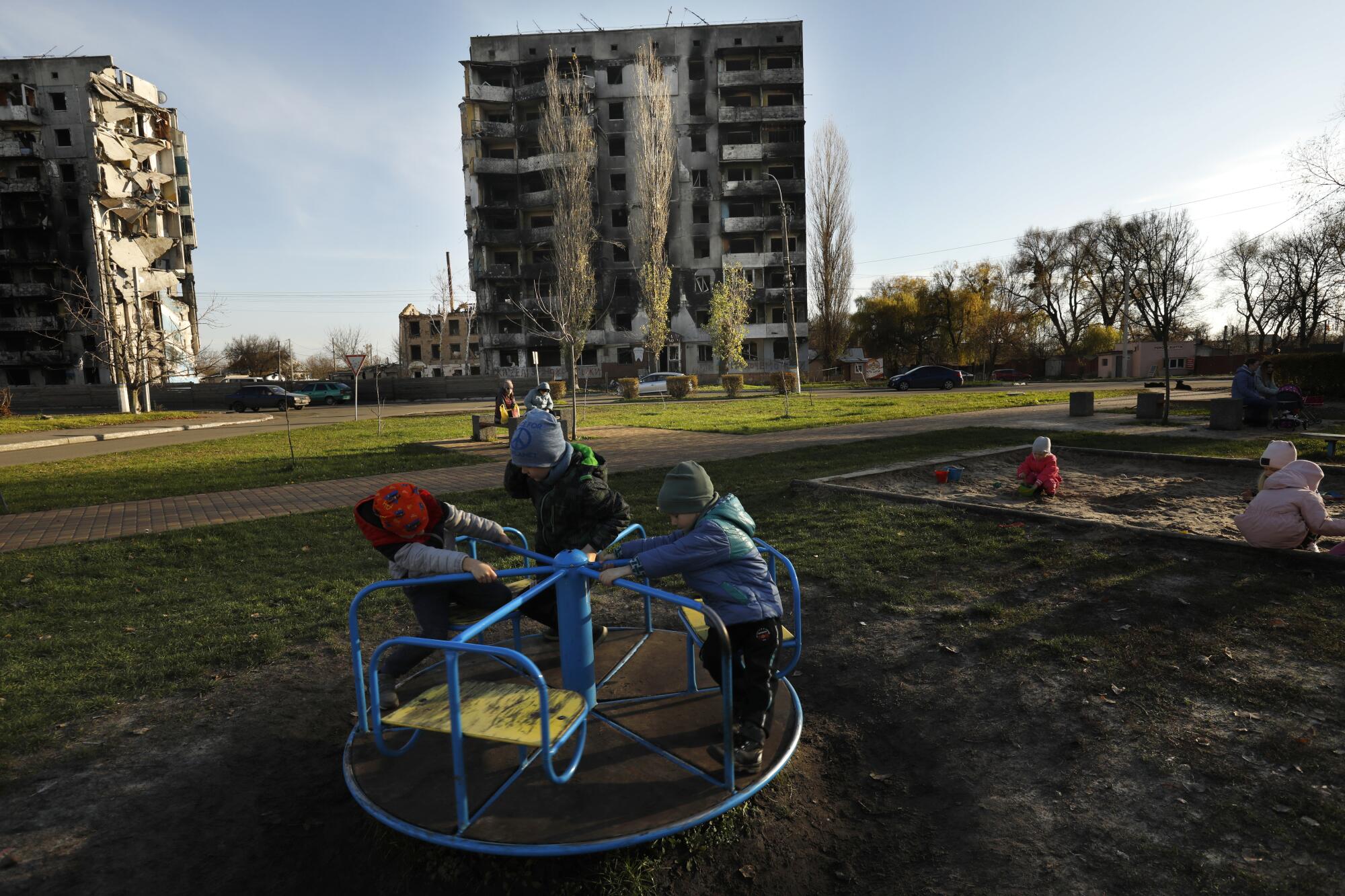
On Feb. 26, two days after the Russian invasion began, the 26-year-old was on duty at the station when his family home was bombed. His wife, mother, father, brother and grandmother were killed outright; his month-old baby daughter, Polina, died a short time later in the hospital.
“The sadness is so large sometimes,” Yakovenko said.
On the building’s ground floor, a 73-year-old named Halyna waved from her window at departing visitors. She cracked it open to explain that her own apartment down the street was destroyed, so she was renting a unit here, one that was cold but largely intact.
“I’m fine,” she said. “I have two blankets!”
::
By cruel coincidence, nearly all the Borodyanka men mobilized for military service are deployed at the scene of a particularly brutal ongoing battle, in and near the town of Bakhmut, hundreds of miles away on the eastern front lines.
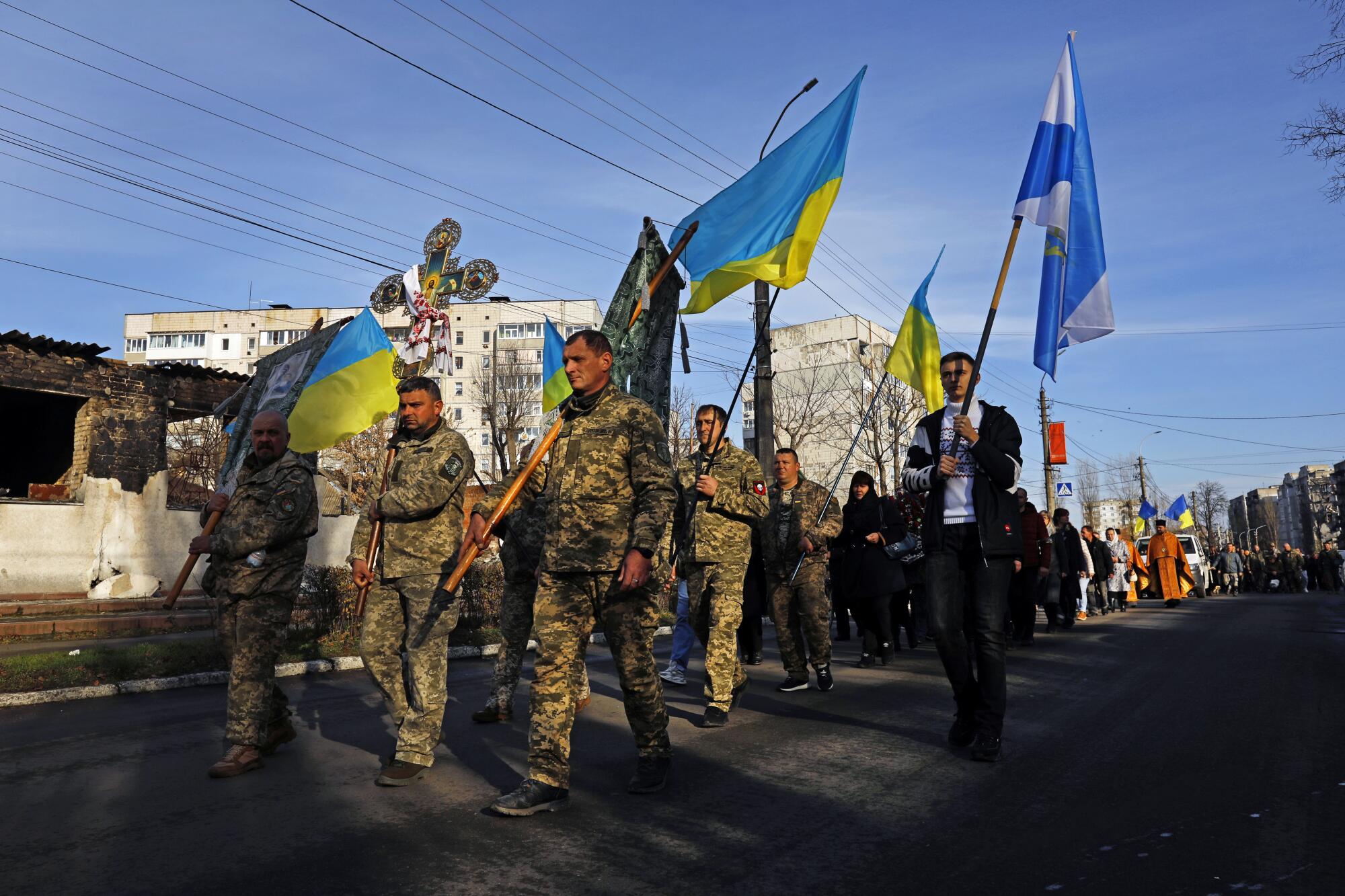
One day last week, the body of fallen soldier Oleksii Kozlenko, 32, arrived home. As the funeral procession moved up Tsentralna, a group of women who had gathered to receive aid packages from the municipality turned and knelt down as the coffin passed.
“Every day, it seems that we bury someone,” said Rudnychenko, the architect.
Farther down Tsentralna, at the Flower Cafe — which sells plants and bouquets as well as food — proprietress Tetiana Lytvynenko, 33, was serving up paninis and coffee. Business was a bit slow, she said.
The cafe sits opposite the much-photographed pair of nine-story buildings with blackened facades, just across the street from the Banksy mural on an adjoining building. Lytvynenko said it was understandable that outsiders would come to see these things; even she is sometimes shocked by the sight of the sooty, hulking husks where so many of her customers once lived.
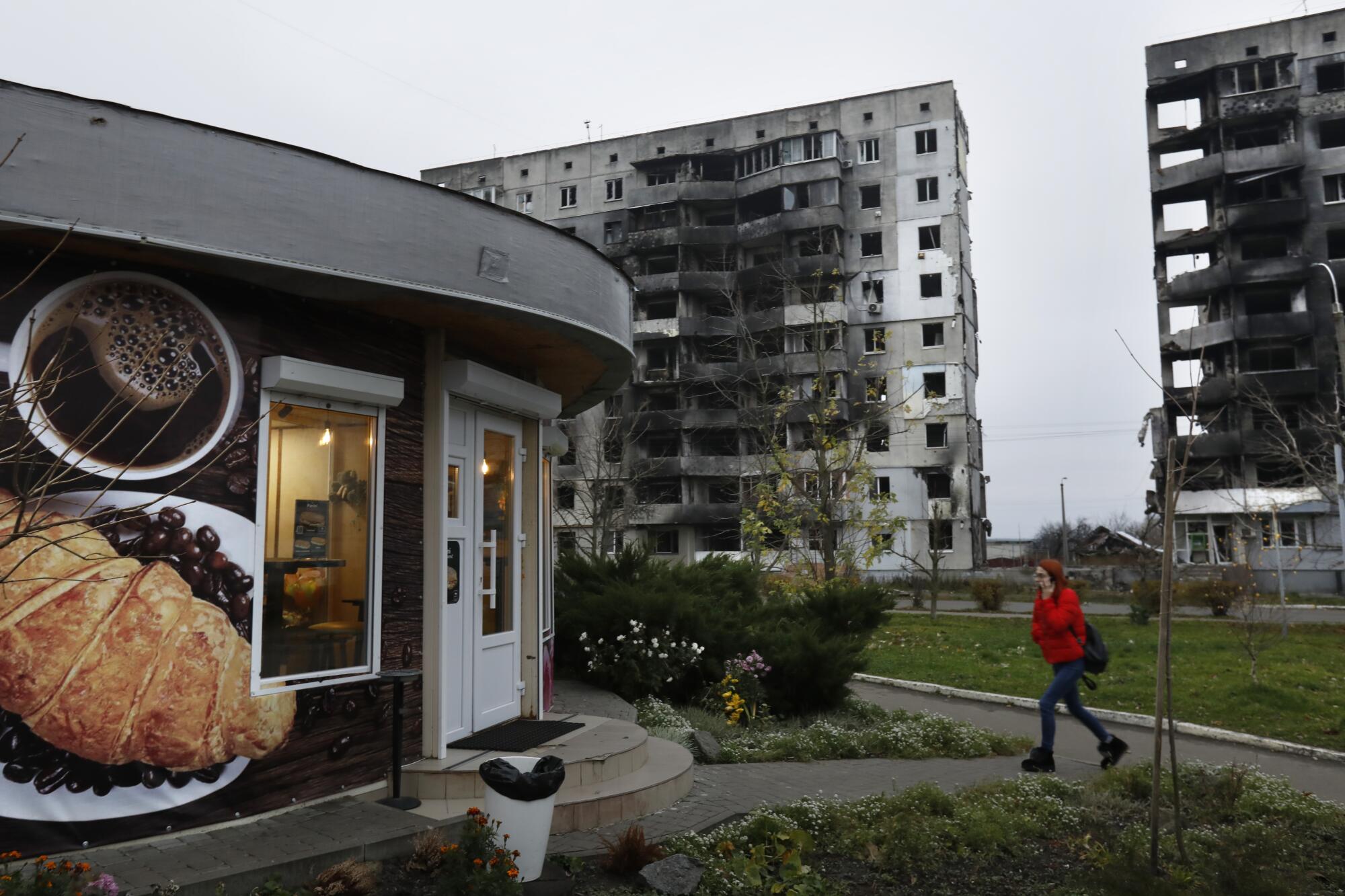
“When people come to see, I just wish more of them would order some food!” she said.
The small, bright cafe that she and her husband ran for a decade was badly bomb-damaged, but because it’s a modular kiosk, it wasn’t too difficult to replace. That wasn’t the case with their nearby apartment. While sheltering outside Borodyanka with their young son, the couple spotted the smoking ruins of their building in news footage.
She shook her head.
“At first, we were shocked and crying, but we’ve passed that phase,” she said. “Now we just laugh.”
More to Read
Sign up for Essential California
The most important California stories and recommendations in your inbox every morning.
You may occasionally receive promotional content from the Los Angeles Times.
